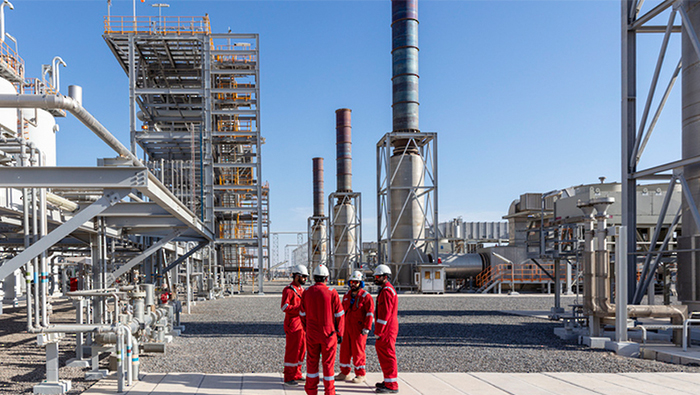In September 2024, the production of gasoline in the Sultanate of Oman decreased by 30.2% compared to August of the same year. The National Centre for Statistics and Information (NCSI) reported that the total production of refineries and petroleum had also fallen by 8.4% by the end of September 2024 in comparison to the same period in 2023.
The production of regular gasoline (M-91) saw a decline of 18.6%, with 10,015,900 barrels produced and 10,502,400 barrels sold. Premium gasoline (M-95) production fell by 3.4%, with 9,154,300 barrels produced and sales reaching 9,964,700 barrels. Diesel fuel (gas oil) production was down by 12.3%, reaching 23,311,800 barrels, while sales amounted to 10,544,300 barrels. On the other hand, the production of aviation fuel oil increased by 4.4% to 8,450,800 barrels, with sales of 3,043,100 barrels. Liquefied Petroleum Gas (LPG) production stood at 6,477,800 barrels, with sales reaching 7,365,400 barrels.
Petrochemical production in Oman also saw some fluctuations, with benzene production increasing by 10.5% to 130,900 MT, and paraxylene production hitting 431,400 MT, an 8.4% growth. However, polypropylene production dropped by 33.4%, totaling 137,200 MT by the end of September 2024. In terms of exports, gasoline (M-91) saw a significant increase of 72.1%, totaling 2,102,200 barrels exported, while premium gasoline (M-95) exports rose by 57.3% to 912,700 barrels. The exports of diesel fuel (gas oil) reached 12,633,100 barrels, and aviation fuel oil exports stood at 5,244,900 barrels. LPG exports reached 306,700 barrels, while paraxylene exports reached 433,900 MT, and benzene and polypropylene exports hit 129,500 MT and 105,800 MT, respectively.
The decline in oil and gasoline production in Oman could have various implications on the country’s economy and the global market. The decrease in production could result in lower revenue for the government, impacting the overall budget and investment plans. Additionally, reduced production may lead to a decrease in exports, affecting the country’s trade balance and potentially impacting international supply chains. This could also have implications for global oil prices, as changes in production levels in a major oil-producing country like Oman can influence market dynamics and prices worldwide.
It will be essential for Oman to closely monitor its production levels and make strategic decisions to stabilize its oil and gasoline output. This could involve investing in the modernization and efficiency of its refineries, exploring alternative energy sources, or implementing policies to stimulate domestic consumption and reduce reliance on exports. By carefully managing its production and exports, Oman can navigate the challenges of fluctuating global oil markets and ensure the sustainability of its energy sector in the long term.
In conclusion, the decrease in gasoline and oil production in Oman in September 2024 compared to previous months and years indicates the need for the country to adapt to changing market conditions and implement strategies to maintain a stable and competitive energy sector. By focusing on efficiency, innovation, and sustainability, Oman can overcome challenges in the oil and gas industry and position itself as a resilient player in the global energy market.










